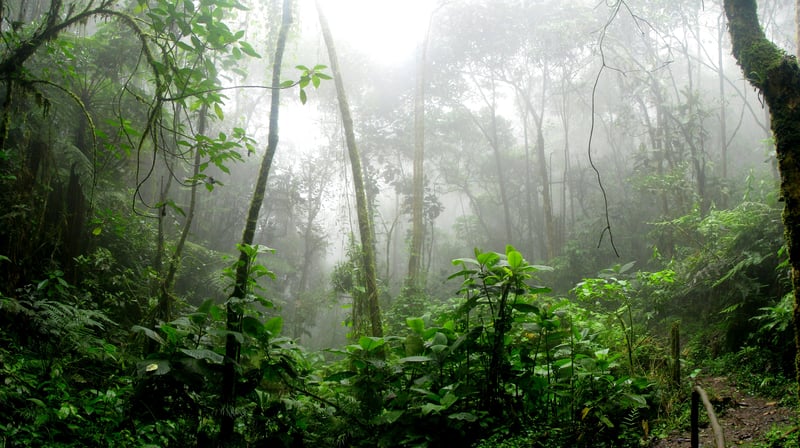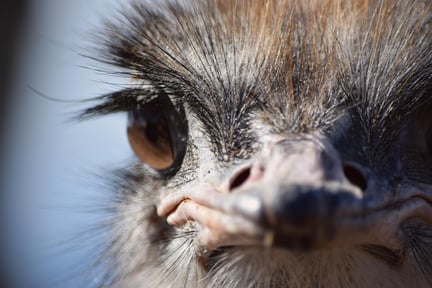
The future of fashion - from the Amazon to the catwalk?
Blog
With the increasing number of eco- and animal-friendly materials becoming widely available, there is no excuse for the fashion industry to continue to exploit wild animals for their skins, fur, or feathers.
One of these innovative materials is shiringa bio-leather, made from the regenerative latex sap of the shiringa trees of the Amazon Rainforest.
Our friends at Collective Fashion Justice traveled to Peru to speak with the Indigenous communities, material innovators, and designers who are all playing a vital role in bringing this amazing material to life. You can watch their beautiful film SHIRINGA here.
We asked Emma Håkansson, founder and director of Collective Fashion Justice, who also produced and directed the film, a few questions on the material and the people behind it...
If people really understood how fashion can destroy or protect life we would all live better
What is shiringa?
Shiringa trees have long been used by Indigenous communities in the Amazon for the regenerative collection of shiringa sap, or latex, that has been used to waterproof fabrics, baskets and other items. Now, Indigenous people collect shiringa sap for the creation of bio-leather: on hundreds of years old trees that their ancestors also protected. Caxacori Studio, a Peruvian-based sustainable fashion company which develops circular economy biomaterials, works with these local communities to produce shiringa bio-leather at scale so there is now greater capacity for it to replace animal-derived materials and fossil fuel-based synthetics, as well as benefiting a wider number of Amazonian people.
How did this film come about?
So, Caxacori Studio followed Collective Fashion Justice on Instagram several years ago. They have a conservation agreement with the Awajún people who make shiringa bio-leather and, over the years, we developed a relationship that ultimately led to the film’s creation. When I was a judge for the Milan Fashion Film Festival in 2023, I saw the influence that beautiful films have on the creative decision makers of the fashion industry, so much more so than the reports and research on the benefits of shifting beyond animal-derived materials to bio-based materials - these often do not make it to the top decision makers, staying further down a brand’s chain of power, usually within sustainability teams.
It must have been an amazing experience to travel to Peru and see this material being made firsthand. What did you learn from your trip?
It was wonderful to see a clear example of a total ethics fashion future, happening now. No animals are harmed, people benefit from shiringa bio-leather’s production, and so does the forest and our climate. The fashion industry and us all could learn a lot from how Indigenous communities like the Awajún live in alignment with the natural world they rightfully recognise themselves as a part of.
What are the benefits for designers in using this material?
In the film, Jorge – founder and CEO of Caxacori Studio – says “Fashion is creative and needs endless options, textures and qualities. They all exist in nature if we work with it” and you really see this with shiringa, which has so many benefits for designers. It’s a warm, rich, highly flexible material which can be folded and sewn without cracking. It’s also customisable, so it can be dyed and embossed to create an endless variety of different colours, textures and patterns. It’s also thermally insulating and water resistant. Designers working with this material also have the knowledge that they are working with an ethical product, with amazing provenance, that causes no harm. As Mozhdeh Matin, a Peruvian designer who works with shiringa leather says, “the story of how materials are made adds to the beauty of my work as a designer”.
Why is it important that the fashion industry and consumers champion these kinds of eco and animal-friendly materials?
When we have the choice to use materials that help us move past the current harms caused by the fashion industry, we have a duty to do so. Animal-derived leather has one of the most significant climate, land and biodiversity impacts of all materials, so it is essential to move beyond that just from an environmental perspective. This environmental destruction further relates to animal harm because deforestation and biodiversity destruction in leather supply chains results in wildlife losing their habitat and lives. In the Amazon Rainforest for example, deforestation which is largely led by cattle ranching is linked to the endangerment of giant otters, toucans, jaguars and many other species.
Where should people go to find out more?
Of course, we’d love everyone to watch and share the film. For anyone, designers or consumers, who wants to find out more, you can learn about the material’s qualities, benefits and production in our in-depth resource available on the Collective Fashion Justice website here.
Read more
-

5 brands paving the way for a wildlife-free fashion...
Blog
Fashion has always been a platform for self-expression and a form of art, but it’s time to rethink...
-
The history of feathers in fashion | World Animal...
Blog
The decorative use of feathers for clothes and accessories dates back thousands of years, exploiting, endangering and even...
-

The dark side of feathers in fashion
Blog
Feathers in fashion are often seen as symbols of elegance and luxury, but the real cost behind them...
